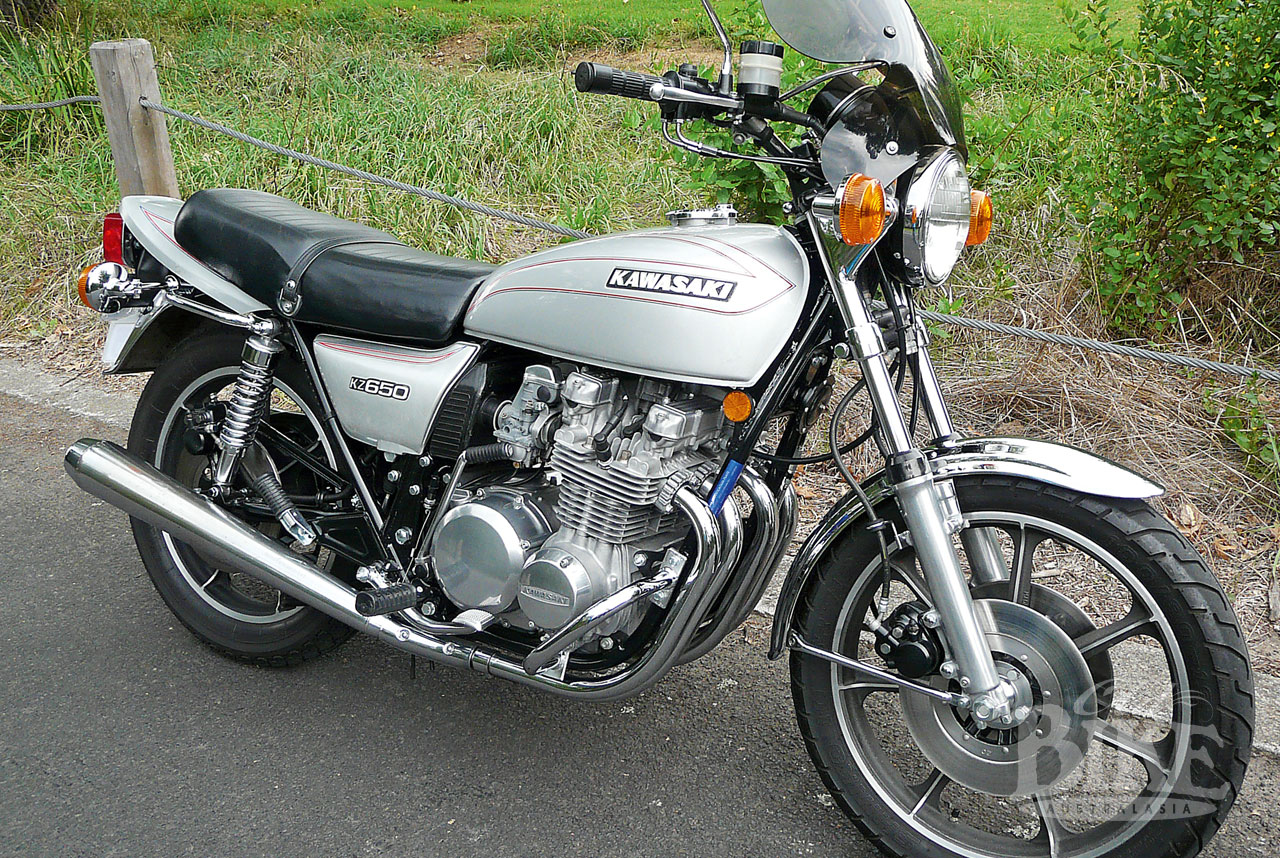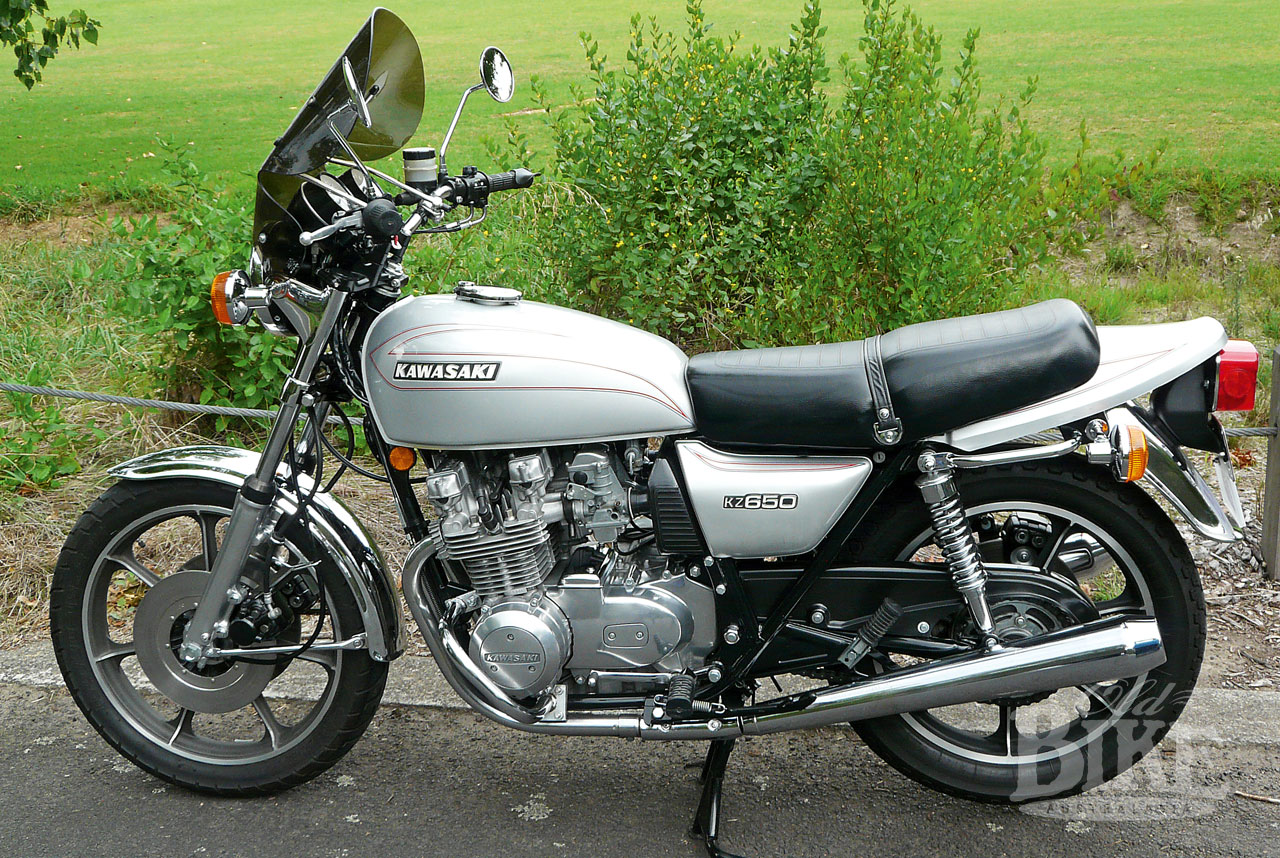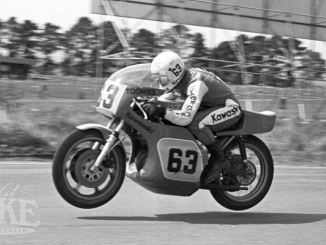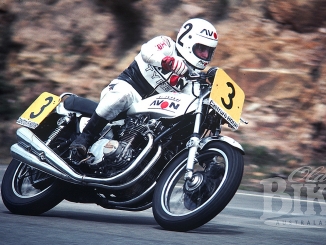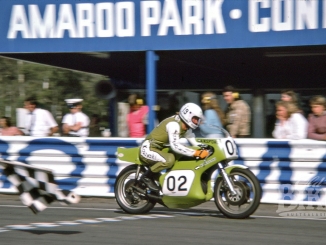
From our Old Bike Archives – Issue 101 – first published in 2022.
Story: Peter Laverty • Photos: Neale Binnion, Gaven Dall’Osto, OBA archives
Just when everything was getting bigger in the ‘seventies, Kawasaki went smaller. By mid decade, Kawasaki had its range of 900 fours, and the not-so-fondly remembered Z750 twin, but the company felt the 650 class was ripe for the picking, as none of the Japanese factories offered a four-cylinder model.
The concept of a 650/4 lay on the drawing boards in various conceptual stages for quite a few years until Kawasaki’s Chief Engineer Gyoichi (Ben) Inamura penned his own version, which had obvious similarities to the 900. Inamura said his brief was “to produce an enjoyable and interesting machine with a unique sports character.” And not too heavy either. To this end, every aspect of what was to become the z650 was targeted for size and mass in order to produce an ideal power-to-weight ratio. This translated as 64hp at 8,500rpm with a dry weight of 211kg.
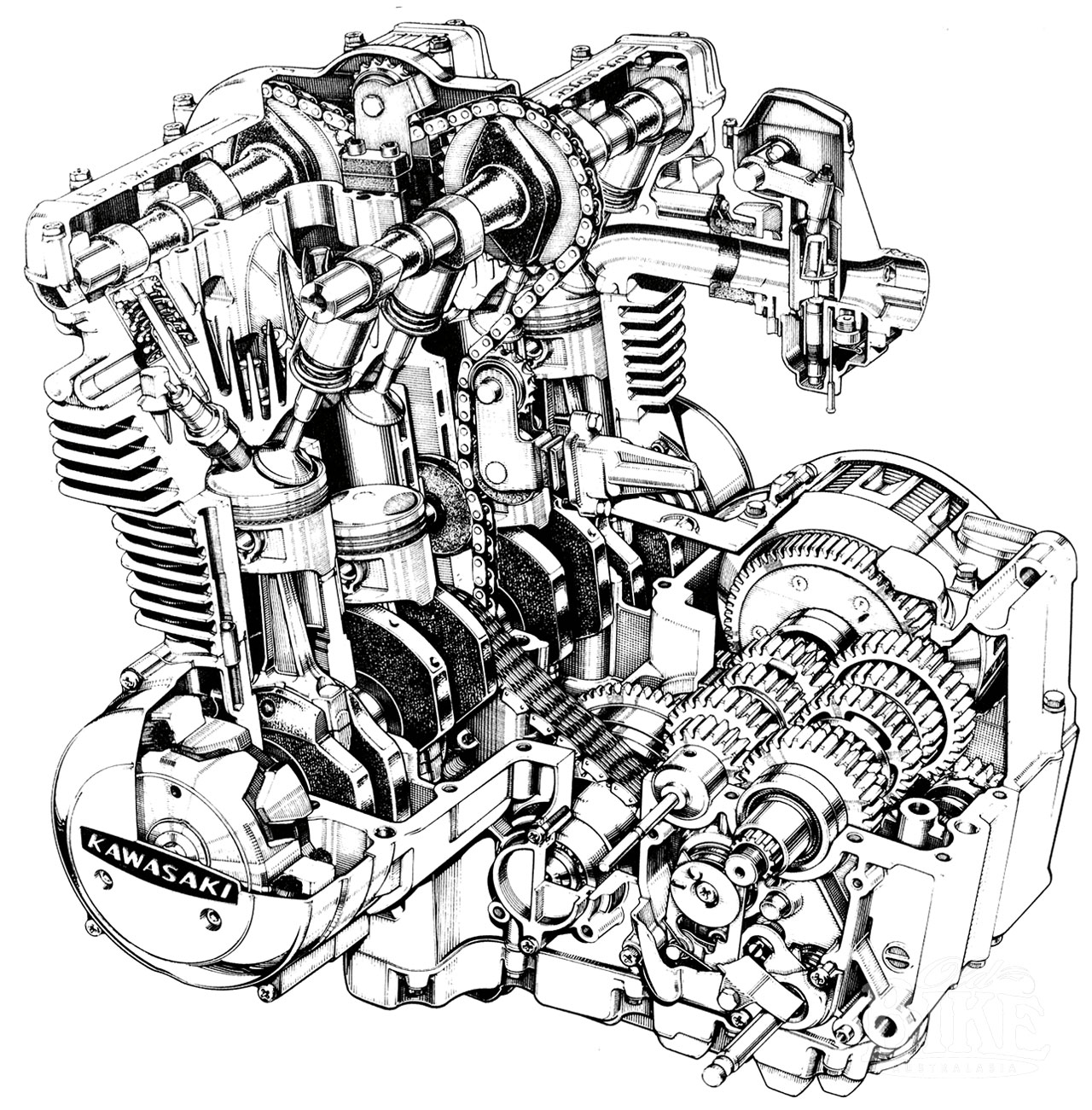
Inside the DOHC 2-valve engine sat a forged one-piece crankshaft, running on plain bearings with two-piece plain bearing connecting rods. Instead of the gear primary drive on the 900, a HyVo chain sitting between the two centre cylinders was used, necessitating a third shaft in the transmission to drive the input side of the clutch. Valve adjustment was by shims under buckets, instead of the shim-over-bucket system on the 900 which had shown tendencies for the shims to escape. It also ran quieter. This however meant the camshaft had to be removed when adjusting valve clearances. The 650’s camshafts ran directly on bearing surfaces machined into the head itself, unlike the Z1 which used bearing inserts. To cope with the ever-more-stringent emissions requirements, a new system called Positive Crankcase Ventilation improved the output of emissions by 40 per cent.
In keeping with the ‘scaled down Z900’ concept, the z650’s frame followed the successful double cradle design, but in smaller proportion. The 650’s frame also employed a larger diameter backbone tube that was thicker in the walls, with more extensive bracing and stronger engine mounts. Brakes were entirely adequate to requirements – an efficient single 275mm front disc and a conventional 250mm drum at the rear. Wire-spoked wheels, rather than the cast wheels that were becoming fashionable, were used. As well as being cheaper to produce, the spoked versions were considerably lighter. The choice of a four-into-two exhaust system was apparently made because on the Z1 four-pipe system, the mufflers failed to generate sufficient heat to dispel moisture, and were thus prone to internal rusting.
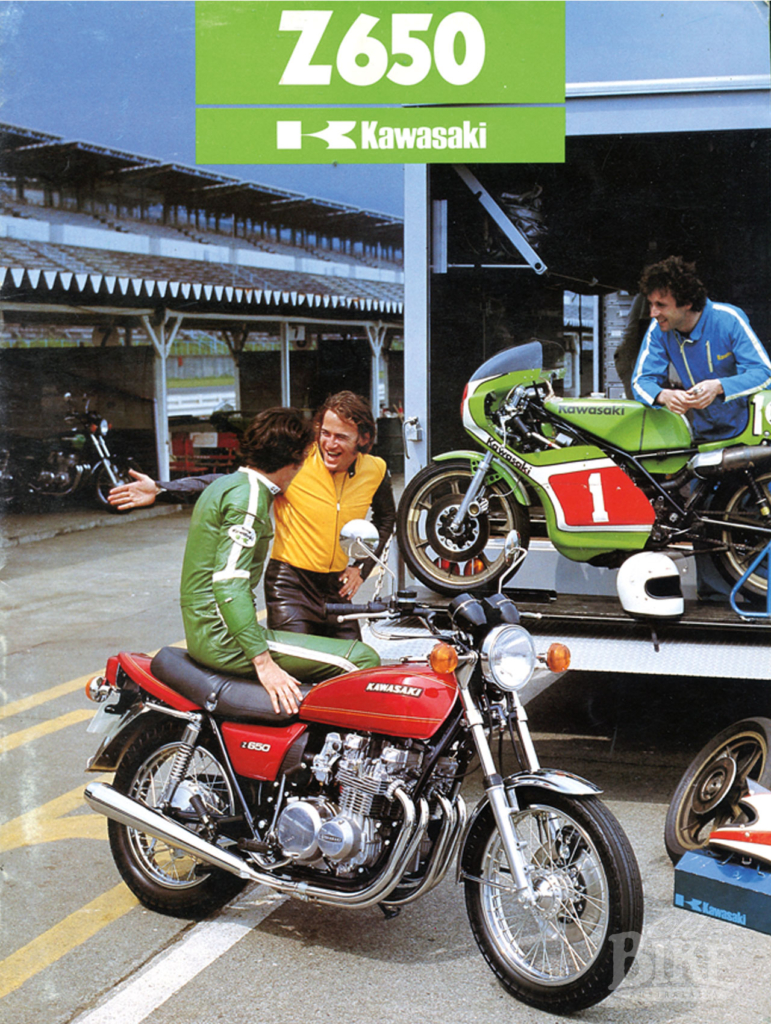
The public bow
Although shown in late 1975 at the Tokyo Show, production of the z650 did not commence for almost a year, with the standard colours being Candy Super Red and Candy Emerald Green. Prior to the November 1976 London Motorcycle Show, six hand-assembled z650s were sent to UK, loaded into one of the Team Kawasaki race transporters, and taken to the 1-mile circuit that had been created inside the Royal Agricultural Showground at Ingliston, near Edinburgh. 30-odd European journalists were then let loose on the new machines, and the result was an overwhelming thumbs-up. It was perhaps the largest-scale European press launch yet staged by a Japanese manufacturer, setting the scene for bigger and better to follow. But prior to this, the new z650 had made its world debut on the production racing scene, not in UK, but in Australia. More of this later.
Early tests by US magazines Cycle and Cycle World were effusive in their praise for the z650, marketed Stateside as the KZ650. They found a free-revving engine that propelled the z650 to a top speed of around 120mph (193km/h). A select few US journalists were flown to Fuji Speedway in Japan, where the handling capabilities of the Z650 were demonstrated very positively. When ridden hard, the first component to surrender was the rear suspension, but Cycle World said, “Overall, it was damned impressive… a DOHC Four that will outrun most 750s.” Perhaps unkindly, several referred to the KZ650 as “the epitome of the UJM (Universal Japanese Motorcycle)”, which is to say, it did everything perfectly and with no pretences.

Over the production life of the z650, from 1976 to 1983, changes were few, but worthwhile. In 1978, the front brake caliper moved to the rear of the fork leg in search of better wet-weather performance. From the beginning, Kawasaki had provided the opposite fork slider with brackets to take a second caliper and disc, should the owner feel this was necessary or desirable. There had been some criticism of flex in the swinging arm, due to the size of the tubing, and while the component itself was not altered, needle roller bearings replaced the plain bushes from 1978. A rear disc was also available in some markets and two new colours were standard; Luminous Dark Blue and Luminous Burnt Red. The C2 model, also introduced in 1978, featured twin front and single rear discs, with Stardust Silver as the standard colour.
1979 saw the adoption of a self-adjusting cam chain tensioner to replace the manual version, discs were drilled (in some markets but not all) and sintered pads used. This necessitated slightly different calipers to take the square-shaped pads. A chopper-style version – the KZ650SR with 16 inch rear wheel – joined the US line up. The original red and green colours returned to the range. The following model year, the roller cam chain was replaced with a HyVo version. In 1981 came electronic ignition to replace the old points system. More visible was the front end, which came directly from the K750E, meaning different brakes, front wheel, and instruments. The kickstarter was considered redundant and removed, and a passenger grab rail added, along with larger 32mm Mikuni CV carbs. Detail changes in 1982 included new rear shock absorbers, tail light and fork internals. Finally, the 1983 model received new 4-ring pistons, cylinder head and rocker box changes. By then, Kawasaki had something much more radical and modern ready to spring – the GPz range. The z650 was quietly retired, replaced by the quite different GPz600.
Track time
In Australia, Production Racing was booming as the second half of the ‘seventies kicked in. And while the trend was certainly towards bigger, faster (and heavier) machines, it had been demonstrated that at certain tracks (and with the right riders in the saddle) smaller, lighter motorcycles that were easier on components, especially tyres and brakes, were very effective.
Well before the European and US launches, examples of the z650 were in the country and being keenly evaluated for racing potential, particularly for the all-important Castrol Six Hour Race at the tight Amaroo Park circuit. The crack Team Kawasaki Australia had already made up its mind, placing an entry for star riders Gregg Hansford and Murray Sayle (1975 winners on a Z1) on a z650, while a second entry, by Kawasaki Motorcycles NSW, nominated Alan Hales and Robert Madden as riders.


However shipping delays, very common at the time, meant that the new models might not be received prior to the closing date for entries, which required a certain number of any model to be sold and registered in order to be eligible. Suzuki was in the same predicament with its new GS750. Finally, after a series of stand-offs and rejections, the race regulations were changed and both bikes ruled eligible. It was just more controversy in a race that had been beset with disputes since the running of the first event in 1970.
It was a brave decision by the top Kawasaki teams, because the majority of the field opted for the proven Z900. Then, two weeks before the Sydney event, local Albury rider John Foster, on a brand new z650, pulled off a major upset when he won the Production Race that supported the prestigious Harvey Wiltshire Trophy at the very tight Hume Weir circuit.
Qualifying for the Castrol Six Hour showed that the z650 was indeed highly competitive at Amaroo Park, with Hales 6th fastest on 59.9 seconds, just 0.3 seconds shy of pole-sitter John Warrian’s 900SS Ducati. Hansford was 8th at 60.2.
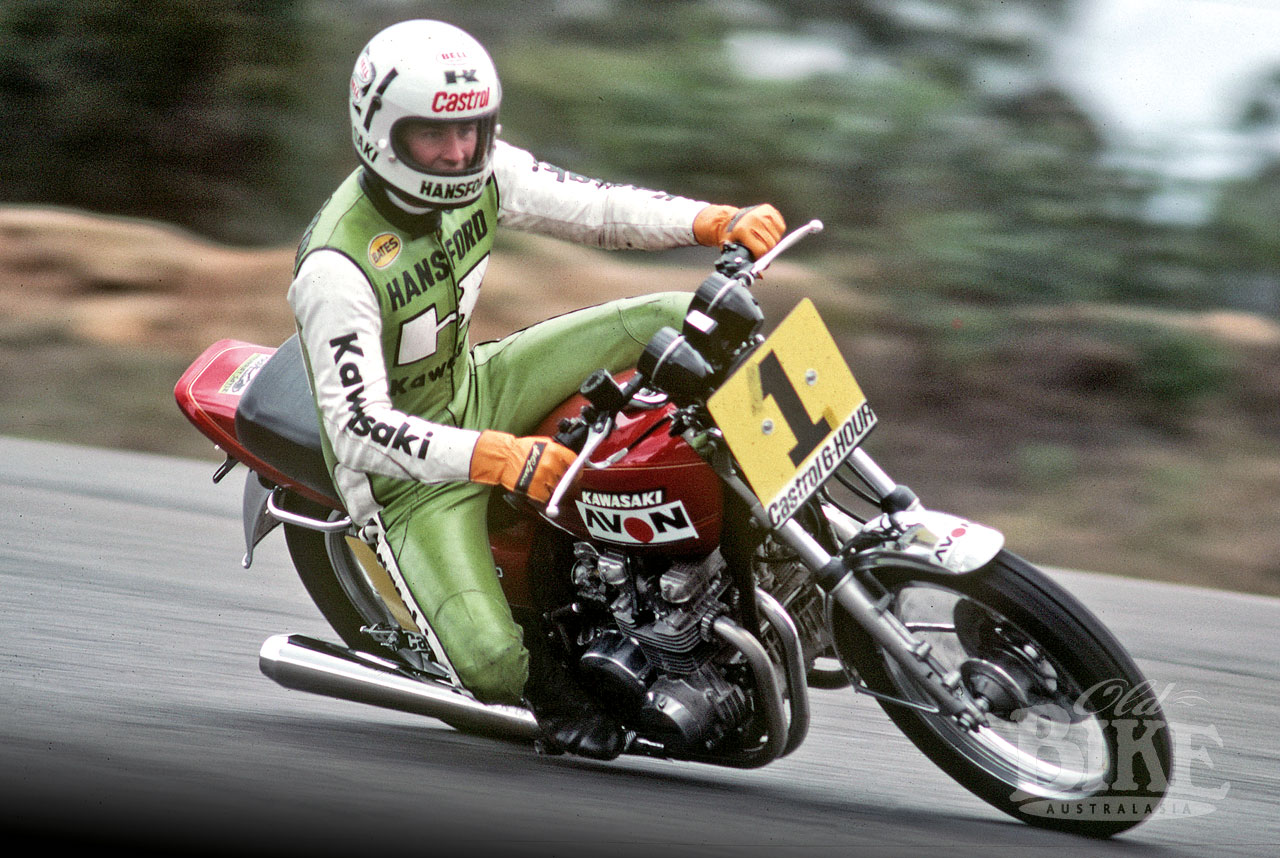
When the flag dropped at 10am, Hansford was straight into second place on the red z650, behind Jim Budd’s Z1-B but ahead of Garry Thomas’ Z900 and Alan Hales on the other z650 – a Kawasaki quartet. Gradually, the smaller Kawasakis were pushed down the order, but were still circulating strongly. Then, near 12.30pm, the TKA bike was into the pits, with seven broken spokes in the rear wheel. It took five minutes to change the wheel, and six laps were lost until the bike rejoined the race with Sayle in the saddle. At the conclusion of six hours of hard racing, Budd and Roger Heyes brought the Team Avon Z1-B home first with 349 laps covered, with the Hales/Madden z650 fourth, just one lap in arrears. Hansford and Sayle managed to claw back to 11th on 341 laps, giving rise to much conjecture on what could have been the result had it not been for the enforced wheel change.
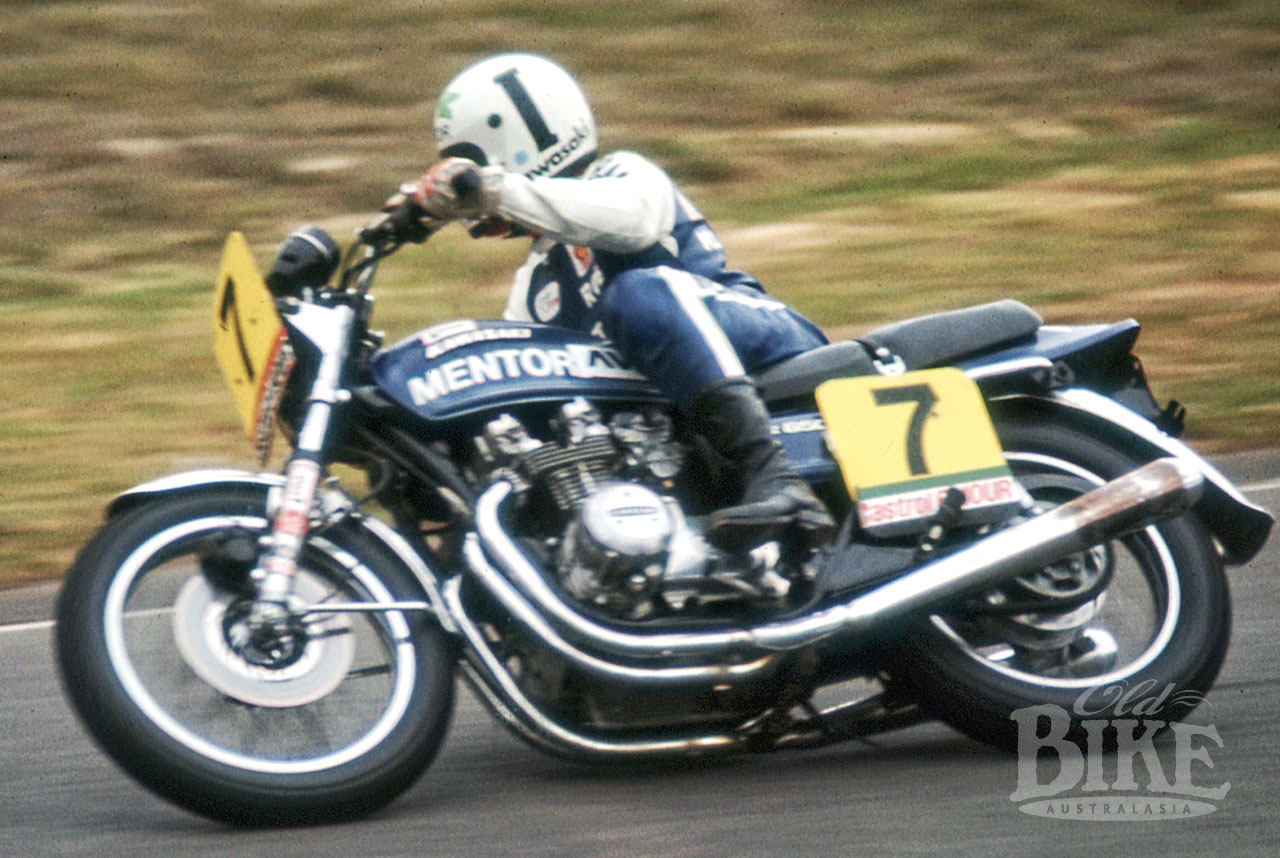
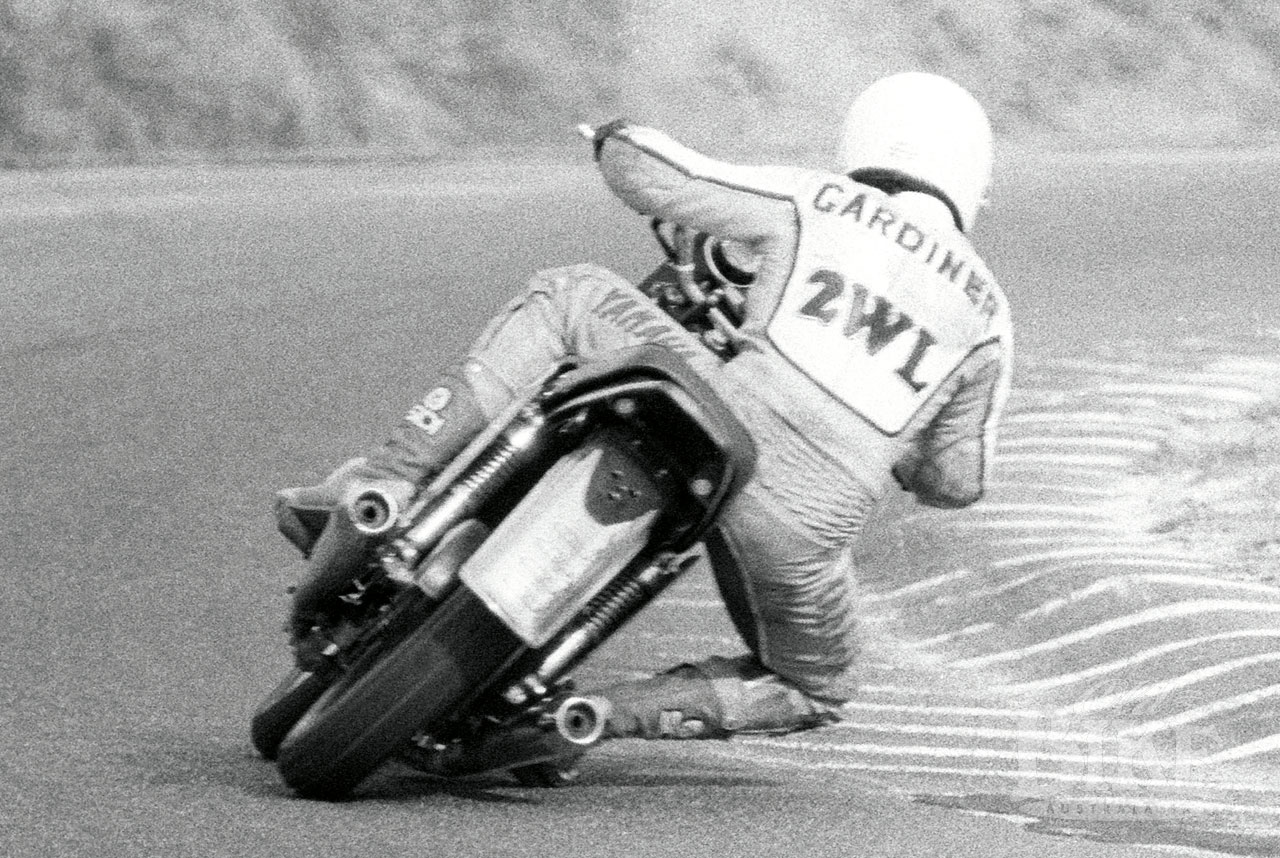
The following year, 1977, saw Hales sensationally qualify on 59.1 seconds on the z650, one of six entered – a time credited to the first four machines, headed by Budd’s old Z1-B. In the race, Hales and co-rider Dave Burgess finished an outstanding third outright on 343 laps, although only three of the six z650s finished the race.
1978 saw the creation of a new class for up to 750cc machines, and eight of the new z650C models were in the field, along with two of the B models. On a z650C entered by Kawasaki Motors Victoria, Rob Phillis and Rick Perry notched 350 laps to claim the class win and 7th outright. One year later came the model’s swansong, with John Pace and Wayne Gardner taking the 750 class win and 7th outright on 355 laps.
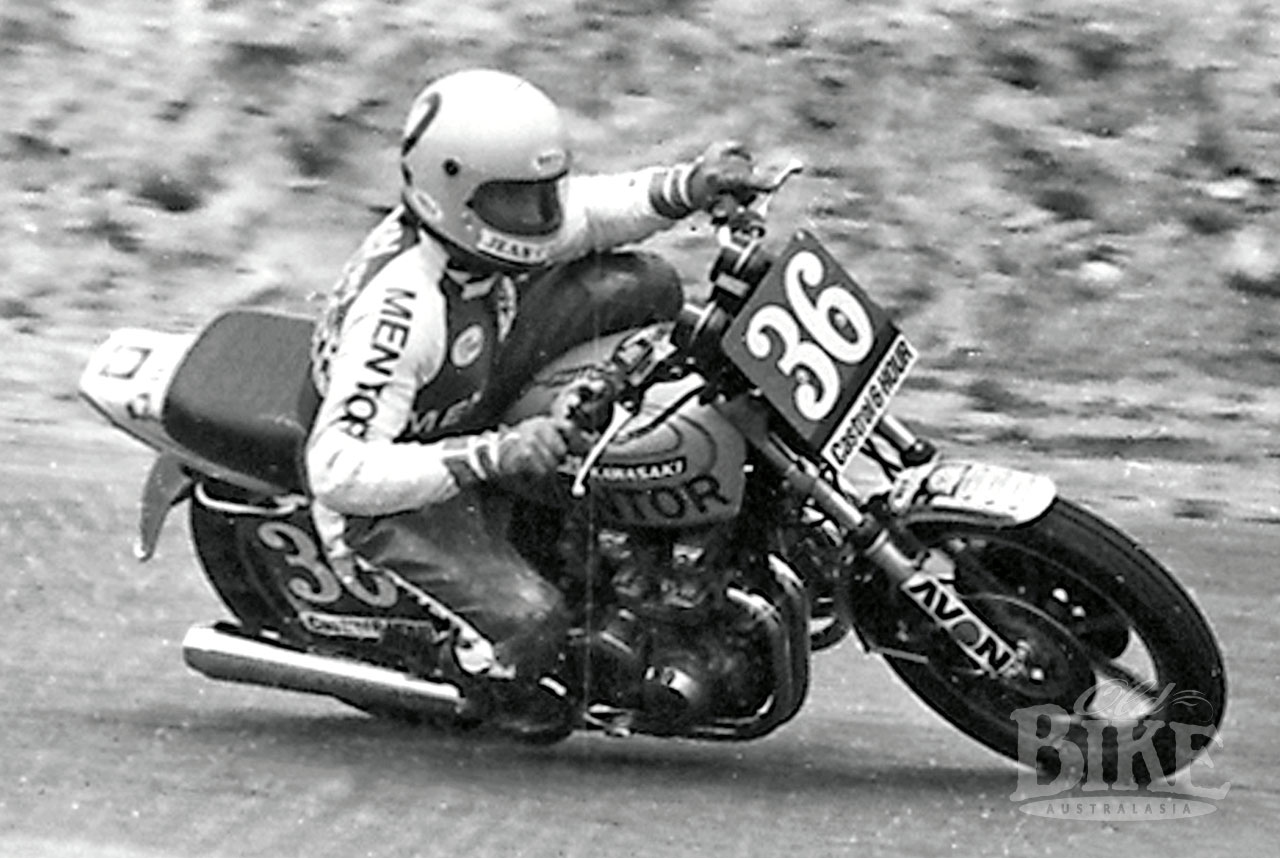
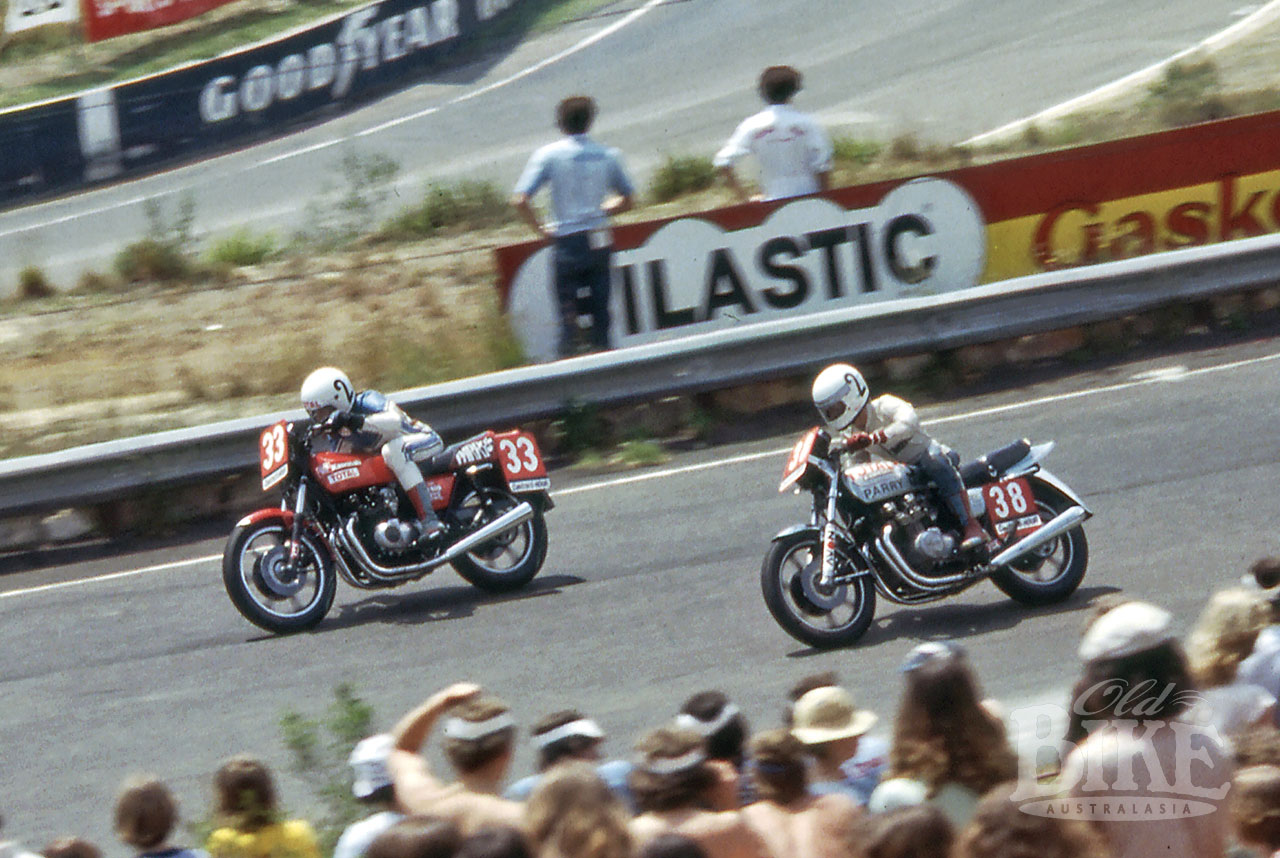
Specifications: 1976 Kawasaki z650 B1
Engine: Air cooled 4 stroke DOHC inline four
Bore/stroke: 62mm x 54mm
Capacity: 652cc
Compression ratio: 9.5:1
Lubrication: Wet sump
Power: 64bhp @ 8,500rpm
Torque: 41 ft-lbs @ 7,000rpm
Carburation: 4 x Mikuni VM24SS
Transmission: 5-speed wet clutch chain final drive
Frame: steel twin loop cradle
Suspension: Front: 36mm telescopic forks.
Rear: Swinging arm twin shock
Brakes: Front: 275 mm disc single piston floating caliper.
Rear: 180 mm single leading shoe drum
Wheels/tyres: Front: 3.25 x 19 Rear: 4.00 x 18
Dry Weight: 211kg
Top speed: 193km/h
Wheelbase: 1420mm
Fuel capacity: 16.8 litres
Local lovelies
Featured in this article with photographs by Neale Binnion are two examples of the z650 during its production run. Both are owned by Victorian members of the Vintage Japanese Motorcycle Club. The green machine is an Australian-delivered 1979 Z650-B3 in Luminous Emerald Green, owned by Andrew Hall. I first saw this one back in 2011 when photographing for our special issue Japanese Classics #1 and it’s still going strong. The B3 was the last of the ‘B’ series and had the front brake caliper moved to the rear of the left side fork leg. Most of these were delivered in either the green or Candy Persimmon Red (with orange and gold pin stripes). The B3 is easily identified by having the Kawasaki tank badges in Upper and lower case, whereas the earlier models used all capitals. Andrew’s bike is standard apart from the sensible addition of engine crash bars.
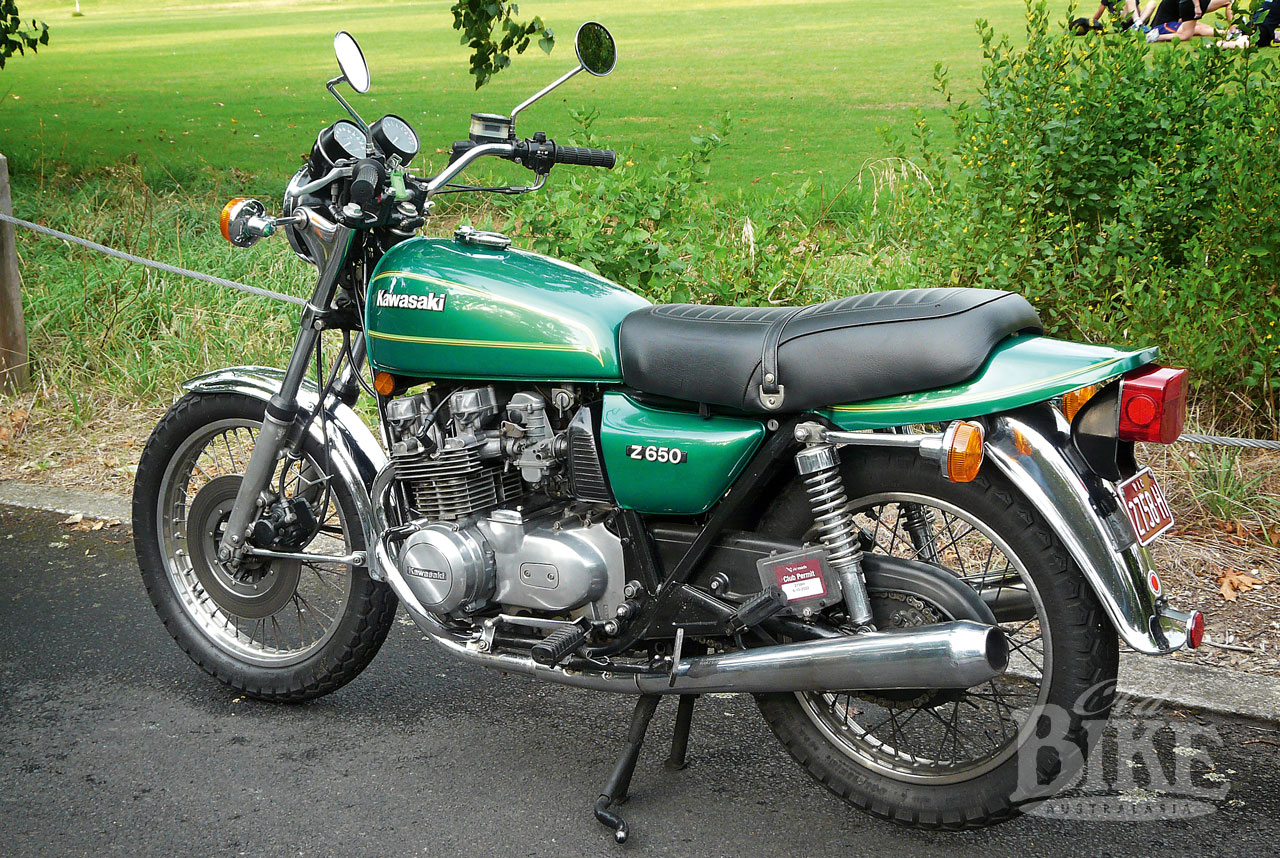
The silver motorcycle is a 1977 KZ650-C1 owned by Colin Kinsman and is an American import, identified by the ‘KZ’ prefix rather than just ‘Z’. The colour is officially Moondust Silver. The C series was marketed in the US as the Custom, featuring cast aluminium alloy wheels (which were heavier than the spoked versions), twin front discs with the calipers mounted at the rear of the fork legs and a cylindrical (rather than rectangular) front brake master cylinder. The C series continued through to the C4 in 1980 which was only sold in selected markets in either Candy Persimmon Red or Black Pearl. Colin’s C1 is standard apart from the windscreen and engine crash bars.
